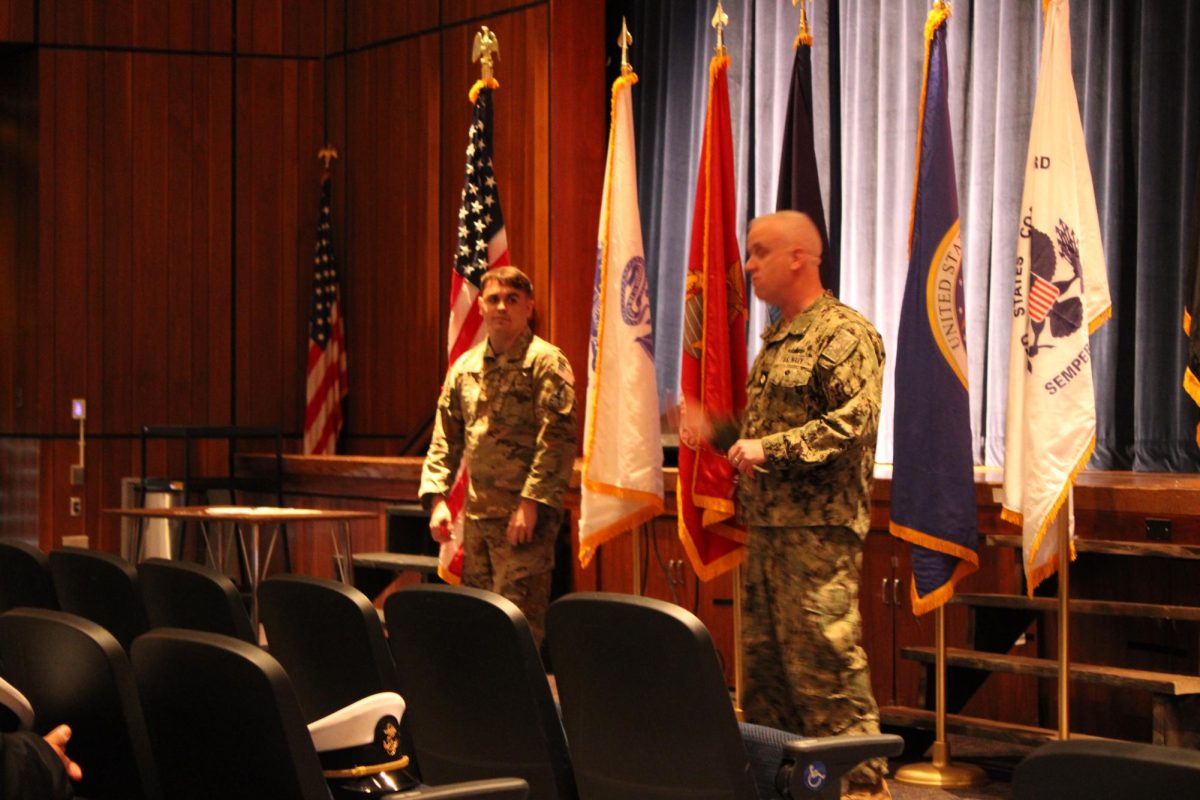The History of New Jersey Shipwrecks
This article is part of the Secret Origins History Column! New Jersey is littered with centuries-old shipwrecks, each with their own story.
January 17, 2023
There have been shipwrecks off NJ’s coast since European ships started sailing around the East Coast of the ‘newly discovered’ America in 1492. Among the most dangerous parts of the East Coast for ships is the Barnegat Shoals and the sandbars along Barnegat Bay. Shoals are places where sand gathers and causes shallow water. These are notoriously bad for ships, and Barnegat Bay is full of these invisible dangers. Along with shallow water spots caused by shoals, the East Coast is home to hurricanes and bad storms, contributing to many shipwrecks, as well as ship traffic that has led to many collisions and wrecks.
Lighthouses may come to mind when you think of ships and shipwrecks. Lighthouses light up to guide sailors in and out of harbors and to avoid sandbars or shallow waters. The stripes on the lighthouses help sailors identify individual lighthouses. The first lighthouse in America was in Boston in 1716. Most lighthouses were built in the 1800s, like Barnegat Light in 1835. There are 11 lighthouses in NJ, with most being when the United States began organizing lifesaving crews and building lighthouses to stop shipwrecks.

The First Documented Shipwreck of New Jersey (1642)
In 1642 the land of NJ was owned by the Dutch. A 20 year old Dutch woman named Penelope Van Princin and her husband were sailing in a small ship from Amsterdam to New Jersey, but wrecked on a hidden sandbar off Sandy Hook. They did not know that the Dutch were having conflicts with the local Native Americans, and were ambushed by Natives armed with axes, their ship was pillaged and destroyed. Penelope was left for dead with ax wounds. She lived for days hidden in the forest until she was discovered by a Native American hunting party. They took her for ransom, but they fixed her wounds with stitches made of plant fibers. Penelope was traded to the Dutch colony, where she married and had 10 kids, and lived to 110 with 500 descendants before she died.
1700s Shipwrecks
There were a lot of 1700s shipwrecks, but most (before the American Revolution) are unnamed. It would not be uncommon for ships to just randomly pass by a wreck that either had a few survivors that had been struggling for days, or for the whole crew to be dead and the cargo plundered. In newspapers, sometimes wrecks were mentioned, but a lot of the time they didn’t know the details of the wreck or even the name of the ship.
During the American Revolution, many shipwrecks happened, and many of those were named as they were military vessels. Americans attacked and looted British ships, and British attacked American ships that smuggled weapons or evaded taxes.
American Revolution Shipwreck at the Battle of Turtle Gut Inlet (1776)
The Nancy was an American ship that carried South American goods legally, and illegally smuggled American Revolution weapons to America.
She was on her way from the Caribbean to the Delaware Bay. Once she reached Delaware Bay the British ships Kingfisher and Orpheus gave chase. The Nancy was smaller and faster, and evaded the larger British ships, but ran aground on Wildwood beach. The British ships started shooting at the little American ship, but the Nancy was able to hold out till dark. When night fell, rowboats from three American ships, the Lexington, the Wasp, and the Reprisal, retrieved the smuggled weapons from the Nancy while returning fire to the British ships.
When the Americans got most of the weapons out of the Nancy, the British ships were close and even started sending rowboats to board the Nancy. The Americans set a fuse from the Nancy to the shore and lit it when the British were close enough, killing the British and destroying the Nancy. The man that owned the Nancy was compensated by the State of Pennsylvania. A picture of the Nancy is part of the Wildwood Historical Society Crest.
The Lifesaving Service
In the early 1800s, federally funded “Life-savers” were like the precursor to the Coast Guard.
In every shore town, they had a lookout house and would keep tabs on every ship that passed by, making sure no-one was in distress. If they saw a ship was in distress (ship sends out a flare, runs aground, caught in a storm, on fire, etc) they would paddle out to the ship in little rowboats to first get the people out, second the cargo. If they could afterwards, they would help pump the water from the wrecked ship to re-float it.
The lifesavers saved thousands of lives, sometimes sacrificing their own. A good portion of 1800s shipwrecks were non-fatal because of them. They were viewed like how we view firemen today, heroes. Below are some of the more dramatic shipwreck tales of the 1800s.
1800s Shipwrecks
Wreck of Italian Bark Ajace (March 4th 1881):
Traveling from Belgium to New York, a strong storm pummeled the Long Branch area, damaging structures near shore. The Ajace was blown into a shoal at sea, its mast snapping. The local Life Savers tried to tow the Ajace to the nearest inlet, but lost sight of the ship in the fog that later rolled in. Later that day, the Coney Island Lifesavers saw a man on a ship cabin at sea, and rescued him. The man was named Petro-Sala, and he gave his account of what happened to the ship and the rest of the crew. He said when the ship hit the shoal, the crew started praying to Mary for their lives. When the ship started to get pummeled by waves, the crew was washed into the water, except for Petro-Sala, who hung on to the cabin of the ship. The crew grabbed debris to stay afloat in the water, but didn’t make it. Petro-Sala was the sole survivor of the crew of 13.
The Wreck of the Elizabeth (July 9th, 1850)
Traveling from Italy to New Jersey. Soon after the ship left from Italy, the captain died of smallpox. The other members of the crew started contracting it and dying, and the man left in command mistook an island for the New Jersey coast and drove straight into it while in a thick fog. Most of the rest of the crew drowned.
The Wreck of the Kraljevica (February 10th, 1886):
This ship was Austrian, and had a cargo of salt. In the dark night of February 10th, 1886, they crashed into a shoal. The crew of thirteen sent up a flare to the Life-Savers, and all tried to escape into their one lifeboat. The lifeboat capsized, causing eight to drown in the 39 degree water, while the other six held onto the boat and made it to shore. The surviving crew hid in a duck hunting blind, scavenging the supplies there overnight until they were discovered. However, the flare was seen by the Life-Savers, and for 2 hours they rowed in the blizzard to discover the empty ship. On the return journey to shore their boat capsized, killing three of the Lifesavers. The Austrian government gave money to the families of the drowned Lifesavers, and the United States government built 3 marble monuments over the three Lifesavers’ graves located in Barnegat Township.
The Storm of February 14th-15th, 1846:
Ten ships off NJ were driven ashore or pushed into shoals during this huge snowstorm in 1846 that took 60 lives. Some of the ships pushed ashore were drained of water and refloated, some were a total loss. Stories went around that locals put up false lights around the shore to lure ships into getting run aground, and that locals looted the cargo and bodies of the ships that wrecked ashore. The State of NJ conducted an investigation, and found no evidence has been found to prove the looting or trapping ever happened.
The Wreck of The Alabama, Storm of 1846:
One of the ten ships wrecked in the 1846 storm. Bound from Philadelphia to New York, it crashed on a beach in the Manasquan to Barnegat region of NJ. Locals tried to save the seven crew members stranded near the beach, but all seven crew died of exposure to the cold.
The Wreck of The John Minturn, Storm of 1846
Led by Captain Stark, the ship was bound to New York from New Orleans. Along the way to NY, the Minturn came across the ship Cherokee in the Southern US waters. The Cherokee had struck a bar and was sinking. Stark let the crew of 20 be evacuated onto his ship, and continued north with now about 50 people on board.
He arrived in Mantoloking, NJ waters the night of February 14th,1846, and was faced with the icy Nor’easter. The ship Blossom came to Minturn’s aid, and they reluctantly accepted help, letting Thomas Freeborne, the Blossom’s navigation pilot, aboard to help in navigation.
They tried to steer the ship to maintain course for NY, but the sails started shredding from the hail, and the mainsail ripped in two. Stark and Freeborne then tried to steer the crippling ship to the breakers offshore, so in the worst case scenario the crew could abandon ship and head to shore.
But before they got there, the keel of the Minturn (the backbone of the ship) snapped. The ship began to disintegrate in the surf. Lifeboats on the ship were deployed, but were easily flipped by the waves, and those on board drowned. Attempts to send boats out to the Minturn failed as the sea tossed away rescuers. 13 people from the ship washed up on shore alive, the rest (38) washed up on many shores, sometimes miles apart, dead. Among the dead were Captain Stark and Thomas Freeborne. The dead were buried at Point Pleasant. In New York there is a monument to Thomas Freeborne.
1900s Shipwrecks
During WWII, Nazi U-Boats sank many ships while near American coasts.
One of these sunken ships was the Gulftrade in 1942, which was torpedoed in two and killed 19 of the 34 crew on board. The shipwreck is spread across 5 miles underwater off the coast of NJ, and its coordinates identified.
In 1942 the Persephone was torpedoed twice by a Nazi U-boat, about 2 miles from Barnegat Light. 9 of 36 died. The wreck of the Persephone is frequently visited by divers to this day.
What Happened to The Shipwrecks?
Sometimes strong storms push up the wrecks to the beaches, or currents expose them underwater for divers. Some wrecks are marine wildlife homes now.
It is said when you are at the NJ shore, you’re always within a half mile of at least one wreck.
A man named Captain John Lott Dorsett (1830-1910) of Point Pleasant was once a part of the Lifesaving crew that saved many lives on many shipwrecks. He managed to collect pieces of wood from some of these wrecks as souvenirs that he later constructed into a cabinet. He numbered the individual wood pieces making the cabinet and matched them to a list of all 26 the ships they were a part of.

Sources:
Book: New Jersey Shipwrecks by Margret Thomas Buchholz
Book: Shipwrecks Near Barnegat Inlet by David J. Seibold and Charles J. Adams III
NJ.gov: https://www.state.nj.us/nj/things/lighthouses/
NJ.org: https://visitnj.org/article/lighthouses-new-jersey
Jersey Shore Beachcomber magazine: https://jillocone.files.wordpress.com/2018/12/2018-fall-jersey-shore-magazine-beachcomber-cabinet.pdf




























